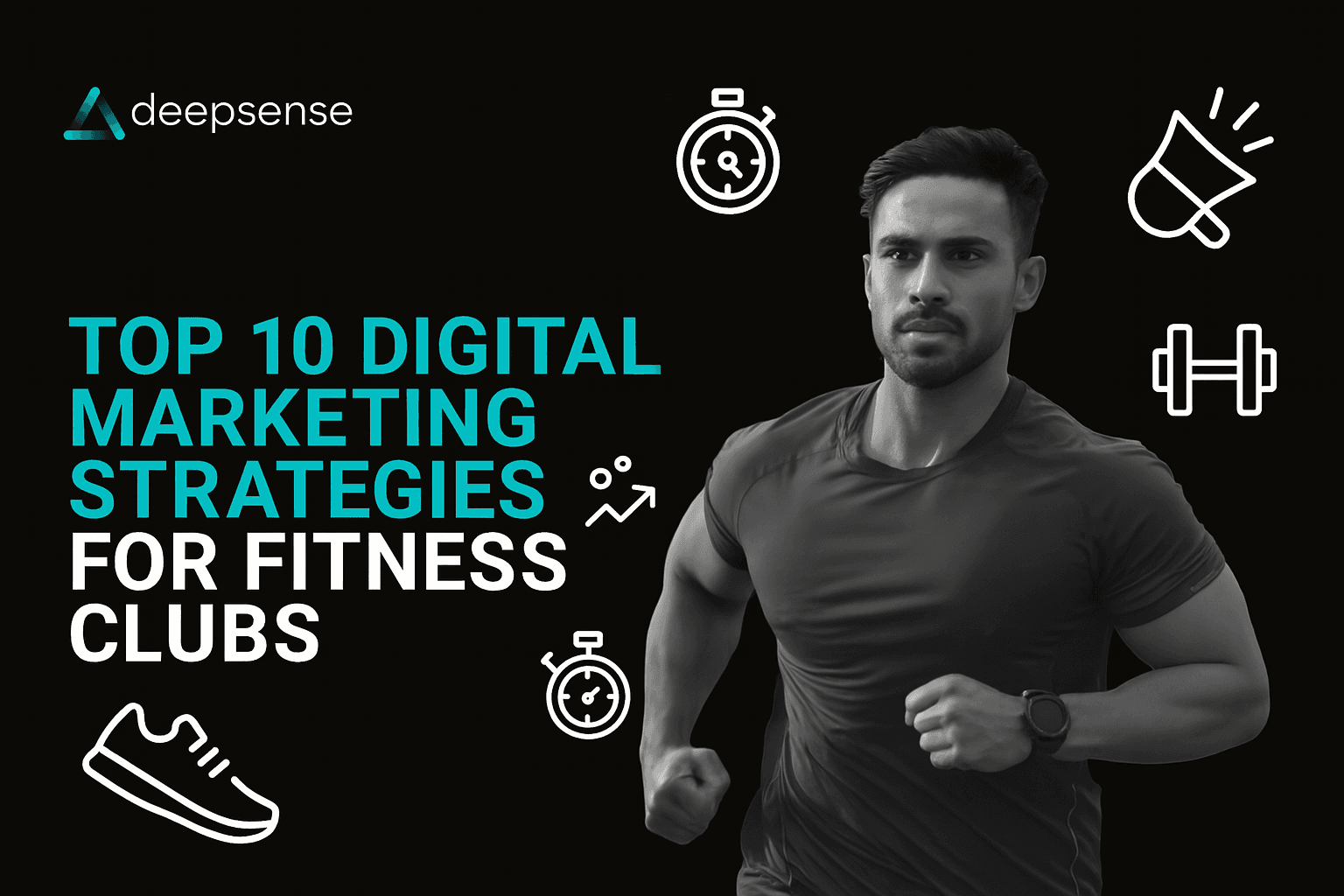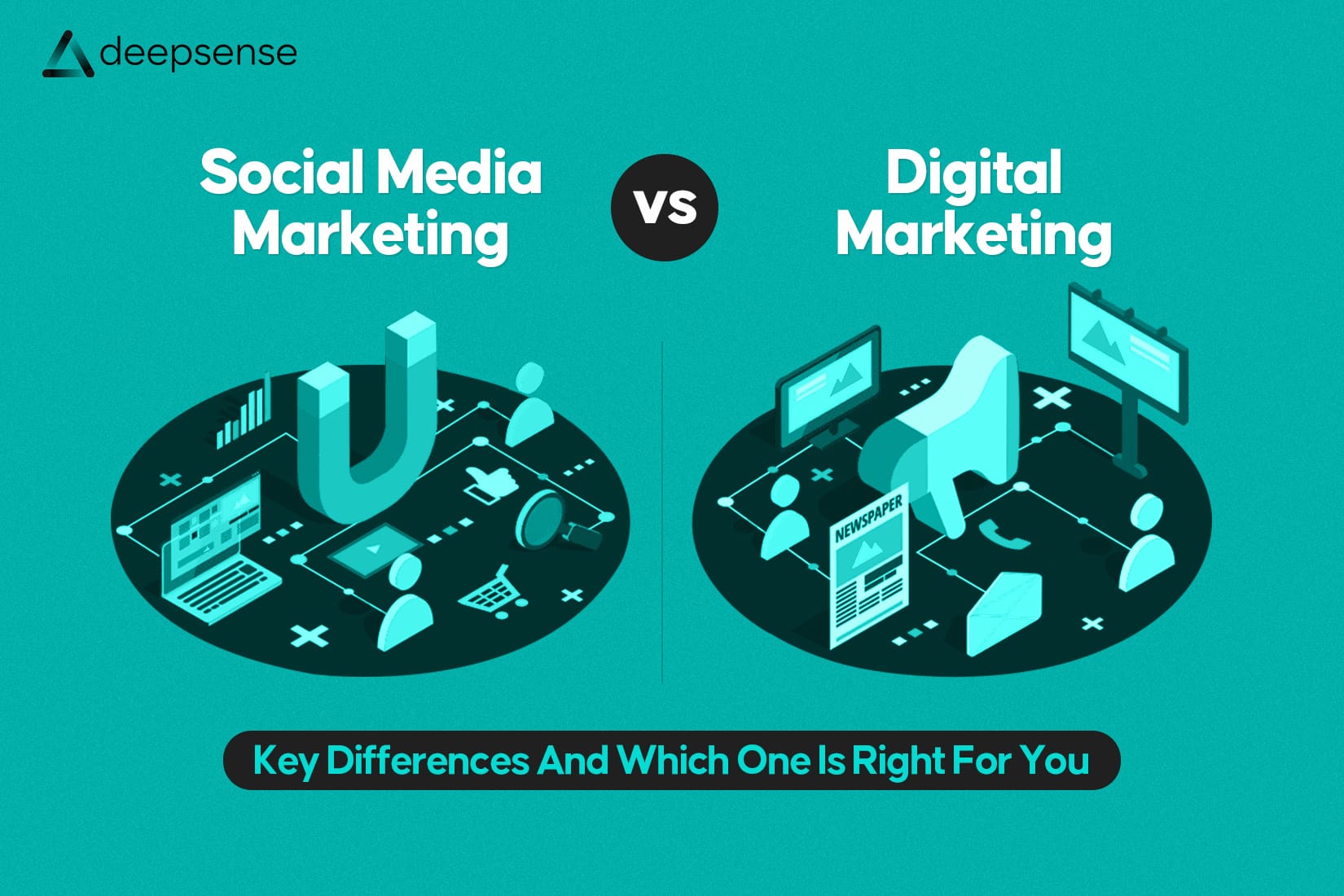Getting Fit is Hard, Finding Your Gym Shouldn’t Be
In today’s fitness world, it’s not enough to just have state-of-the-art equipment and skilled trainers. You could have the most inspiring workouts, killer playlists, and the best protein smoothies in town, but if no one knows about your club, your growth will stall.
Fact: Over 78% of people search online before choosing a gym or fitness club. And 85% say a fitness center’s online presence influences their decision (Statista, 2024).
That’s why digital marketing is no longer optional, it’s your heaviest lift yet.
This blog walks you through 10 practical and high-impact digital strategies to grow your fitness club’s visibility, member engagement, and bottom line. Whether you’re a boutique studio or a franchise, these ideas will help you stand out in a crowded, hyper-competitive market.
Let’s get moving!
1. Optimize Your Google Business Profile (GMB), Your Club’s Online Front Door
When someone searches “gym near me”, your Google Business listing determines whether they walk into your club or your competitor’s.
Action Checklist:
- Add professional photos of your space, classes, equipment, and trainers.
- Include accurate location, contact, hours, amenities (e.g., steam, personal training, Wi-Fi).
- Respond to reviews, especially the bad ones, with empathy.
- Post regular updates about offers, events, or new classes.
Pro Tip: Google rewards frequent updates with better search visibility. Treat GMB like a second website.
2. Instagram & Facebook: Where Fitness Lives Online
Your members are already posting selfies post-Zumba or post-deadlift. You need to be part of that story.
Content Ideas:
- Trainer tips and mini workout videos
- Member transformation stories
- Reels of classes, facilities, and gym ambience
- Nutrition tips from your in-house experts
Use hashtags like #FitnessInChennai or #LegDay to reach locals. Also, tag locations to be discoverable.
Stat: Reels have 22% more engagement than regular posts (Meta, 2024). Use trending audio to boost reach.
3. Content Marketing (Blog + YouTube + Email)
Position your brand as a knowledge hub, not just a place to work out.
Blog Topics:
- “Top 5 stretches before HIIT workouts”
- “Gym vs. Home: What’s best for your goals?”
- “Protein myths debunked”
YouTube Ideas:
- Virtual tours of your gym
- Workout breakdowns (e.g., “How to fix your squat form”)
- Client testimonials in video form
Email Newsletter:
Send bi-weekly updates with:
- Offers and new class launches
- Member spotlights
- Challenges or leaderboard rankings
Expertise matters. Google values original, useful content. This helps your SEO and member trust.
4. Run Location-Based Ads (Google + Meta)
Don’t advertise to the whole city. Target people within 5–8 km of your club, especially those showing fitness interest.
Platforms:
- Google Search Ads: Appear when someone types “best gym near me”
- Facebook/Instagram Ads: Use carousel ads to show facilities or offers
Hook Ideas:
- “Get fit this month: 2 classes free!”
- “First-timers: Get your BMI + workout plan free”
Bonus: Use remarketing to show ads to people who visited your website but didn’t sign up.
5. Encourage User-Generated Content (UGC)
Your members are your best marketers.
How to spark content:
- Set up a branded selfie spot in the gym
- Launch a “Transformation Tuesday” challenge
- Offer small rewards for tagging your gym in stories/posts
Repost this content on your pages. It’s raw, real, and trustworthy, more than any ad.
People trust UGC 2x more than branded content (Nielsen, 2023).
6. Online Reviews = Social Proof
Most people won’t join a gym with no reviews, or worse, all negative ones.
Boost reviews on:
- JustDial
- Fitternity or Cult
- Instagram Highlights
How to encourage reviews:
- Ask after 1st month milestone: “Loved the progress? Tell the world!”
- Offer a protein shake discount for leaving feedback
Respond to each review, especially criticism. It shows transparency.
7. Build a Branded App or Member Portal
If budget allows, build a simple app or web portal for:
- Class schedules
- Trainer bookings
- Workout progress tracking
- Push notifications (reminders, offers, closures)
Not feasible? Use WhatsApp Business with quick reply templates.
Experience = Trust. The smoother your member journey, the longer they stay.
8. Influencer Collaborations (Micro + Local)
Work with local fitness creators (5K–30K followers). Don’t chase celebrities, authenticity wins.
How to collaborate:
- Invite them to try your gym for free
- Get video testimonials
- Host a joint giveaway: “Win a 1-month free membership + influencer merch”
Track post engagement and follow-ups. Use it as evergreen content.
9. Retarget Website Visitors
Many people will visit your website… and leave. But all is not lost.
Install Facebook Pixel and Google tags to track visitors and retarget them with ads.
Examples:
- “Still thinking about joining? Let’s talk goals!”
- “You left something strong behind, us!”
This boosts conversions from warm audiences who already know your brand.
10. Gamify the Fitness Experience
Gamification boosts motivation, retention, and referrals.
Ideas:
- Leaderboards for class attendance
- Rewards for referrals (free PT sessions or shakes)
- Monthly challenges (10k steps, 100 pushups, etc.)
Share winners online. Make fitness fun, people come for results but stay for the experience.
Bonus Strategy: List on Fitness Aggregator Platforms
Use platforms like:
- Fitternity
- Cult.fit
- Nearbuy
- Urban Sports Club
These platforms drive new user traffic and help with brand discovery.
Final Thoughts: Build Muscles, Build Your Brand
Fitness is about transformation, and so is your marketing.
Digital marketing isn’t just about selling memberships. It’s about inspiring journeys, building communities, and showing that your gym is more than just dumbbells and treadmills, it’s where progress lives.
- Start with your Google presence
- Get social and be real
- Educate through content
- Run ads smartly, not blindly
- Celebrate your members as heroes
You don’t need to be a tech expert, just start small, stay consistent, and learn along the way. The results will grow, just like your members do.
FAQs
1. What are the top 7 types of digital marketing strategies?
Here are the seven key types of digital marketing that brands, especially gyms and fitness clubs, can use:
- Search Engine Optimization (SEO)
Helps your website show up on Google when someone searches “best gym near me” or “HIIT classes in [city]”.
- Pay-Per-Click Advertising (PPC)
Google Ads or Facebook/Instagram Ads that drive immediate traffic through paid placements.
- Social Media Marketing (SMM)
Use Instagram, Facebook, and TikTok to connect, engage, and build a fitness community online.
- Content Marketing
Blogs, YouTube videos, fitness tips, transformation stories—content that informs, entertains, and builds trust.
- Email Marketing
Nurture leads and retain members through newsletters, workout plans, and special offers.
- Influencer & Affiliate Marketing
Collaborate with local fitness influencers who have a loyal audience.
- Reputation Management & Review Marketing
Manage your online reviews (Google, Fitternity, Yelp) and use testimonials to boost credibility.
2. What is the best strategy for digital marketing?
The best strategy depends on your audience, budget, and business goals, but for a gym or fitness club, a blended approach often works best:
- Local SEO to get discovered
- Instagram reels + stories to showcase your vibe
- Google ads for footfall and sign-ups
- Email follow-ups to retain members
- Influencer collabs to build trust and tap into new audiences
Pro Insight: The best strategy is consistent, authentic, and data-driven. Track what works, refine, and keep evolving.
3. What is the target market for gym memberships?
Most gyms target adults aged 18–45, but you can go deeper by segmenting based on:
- Students (18–25): looking for affordable, fun, social workouts
- Young professionals (25–35): seeking convenience, results, and trainer access
- Parents (35–45): health-conscious, time-constrained, value-oriented
- Seniors (50+): interested in wellness, flexibility, and mobility-focused programs
Each segment has unique motivators, so tailor your messaging accordingly.
4. What is the marketing strategy of Planet Fitness?
Planet Fitness markets itself on accessibility, affordability, and a judgment-free zone.
Key pillars:
- No Gymtimidation™: welcoming even for first-time gym-goers
- Low cost: $10/month memberships with flexible options
- Mass-market advertising: humorous and relatable TV and digital ads
- Referral & loyalty programs to boost member retention
They’ve mastered the art of appealing to the “everyday” person, not just bodybuilders or athletes.
5. How to market your fitness business?
To market your fitness business in 2025:
- Build your Google presence with great reviews
- Be active on Instagram and TikTok with reels, workouts, tips
- Run targeted local ads
- Offer referral bonuses and first-timer discounts
- Share transformation stories of real clients
- Host open house events or wellness workshops
- Send out newsletters or WhatsApp updates with offers
Consistency + creativity = long-term success.
6. What are the 5 most common target markets?
Across industries, here are five common target market segments:
- Demographic – based on age, gender, income, education (e.g., “young working professionals”)
- Geographic – by location, city, or neighborhood (e.g., “urban fitness seekers in Bangalore”)
- Behavioral – purchase behavior, usage, or loyalty (e.g., “first-time gym members” or “fitness app users”)
- Psychographic – based on values, lifestyle, personality (e.g., “health-conscious vegans” or “goal-driven bodybuilders”)
- Technographic – based on technology use (e.g., “Apple Watch users tracking workouts”)
The more specific your targeting, the more effective your campaigns become.
7. What is psychographic segmentation of fitness?
Psychographic segmentation involves dividing your audience by their mindsets, beliefs, and lifestyle choices, not just age or location.
In fitness, examples include:
- Goal-driven transformers – People trying to lose weight or build muscle
- Holistic wellness seekers – Focused on mindfulness, yoga, clean eating
- Social exercisers – Prefer group classes, Zumba, community challenges
- Biohackers – Into gadgets, supplements, and performance optimization
- Time-strapped parents/professionals – Want efficient, flexible workouts
Why it matters: Psychographics help you speak to people’s why, not just their who. That builds deeper engagement and loyalty.











